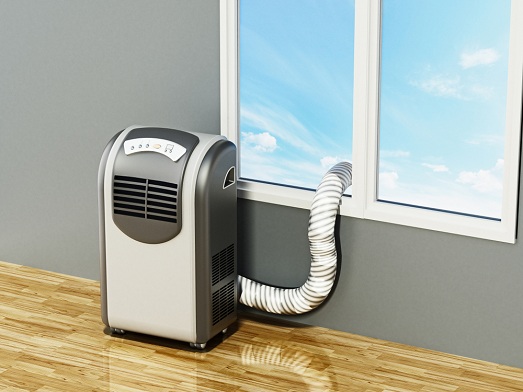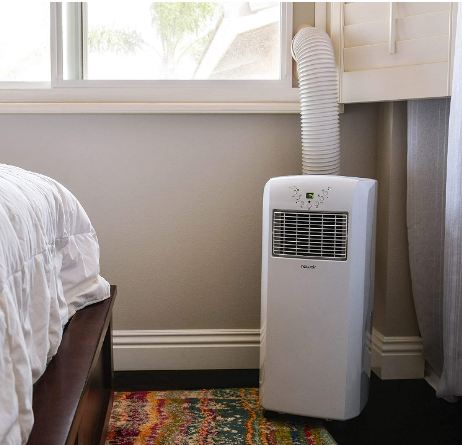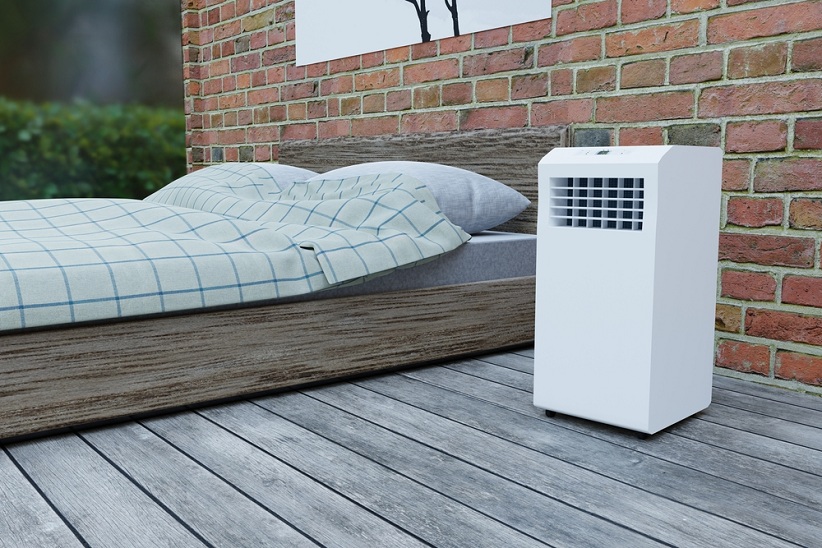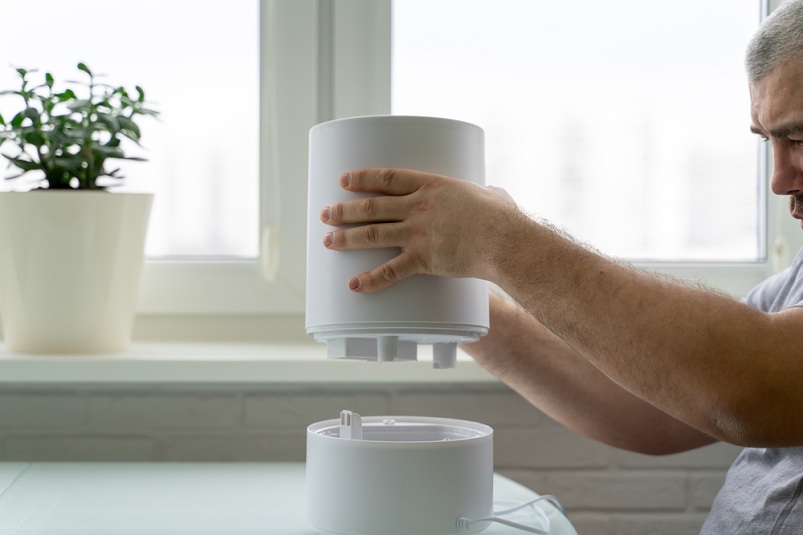Portable air conditioners offer a simple and easy way for people who don’t have central air conditioning or need an additional boost to cool their homes.
To select the right portable air conditioners for your home, room, or workspace, it’s essential to know the exact energy requirements of the unit.
This guide will show how to size a portable air conditioner in terms of BTUs.
You must remember that portable air conditioner units shouldn’t be approached with an “I need to buy bigger” attitude or even a “Well, this one was on special, so I bought it.”
The most important factor when choosing a system is the room size that it will fit into. You should also consider whether you want to use it for gaming, music production, or both.
Best Portable ACs Sold Today
Learn about our top picks for every room size and budget, with reviews, pros/cons, and buying tips.
This is important to note:
You can buy the wrong portable air conditioner. However, this can be easily avoided if you know what you’re doing.
Fortunately, there is an easy way to figure out the right size of portable AC that will give you optimal performance. It begins with understanding the energy requirements for the room you will be air conditioning.
Best Portable ACs Sold Today

When figuring out the right unit size, British thermal units (BTU) is where everything begins.
There are other factors to consider when choosing a furnace, but nothing is more critical than selecting one with the right BTUs (British Thermal Units) for your room, environment, and needs.
BTU is an abbreviation that stands for “British Thermal Unit.” It used to be an exclusively British measure but has become the standard by which any air conditioner is sized.
Any portable air conditioners you come across will have their BTU amounts displayed.
What is a BTU? A BTU is a unit of energy.
BTUs refer to the amount of energy required to raise the temperature of one pound of water by 1 degree Fahrenheit at sea level. While altitude can slightly affect the accuracy of measuring BTUs, the measurement is based on how many BTUs per hour the product can remove from its surrounding environment.
Make sense?
A unit with many BTUs can remove the heat from a large room at an appropriate rate. This results in it cooling the whole room down.
Too Much or Too Little Is BAD
You’re mistaken if you think that a unit with more BTUs is always the best way to go.
Getting too many BTUs for a particular room and environment is possible, but it is not possible to have too few. If you use a small room with a portable A/C with a high BTU rating, you’ll experience unsatisfying results while shortening your air conditioner’s life.
If the BTU output is too high for the space, the unit will cool down quickly but turn itself off and back on again, repeating the process to keep the temperature at which you’ve set it.
The repeated cycling will prevent the dehumidifier from removing the humidity from the air as it’s supposed to.
The end result is a working air conditioner, a lower energy bill, and a room that doesn’t feel warm because of the excessive humidity created by the air conditioner.
An insufficient amount of heat is just as bad.
If your room is not large enough for the BTUs of your unit, it will run its cycles non-stop and overheat the room. You’re left with an overheated room, a higher energy cost, and wasted money on a heater that can’t keep up.
Calculate Your BTU Requirement

It’s difficult to estimate how much energy a room uses, but you can choose the right unit for your cooling needs and leave yourself with a properly cooled room at the end of the day.
The standard rule is to cool the room by using floor space. To figure out your square footage, multiply the length of your room by the width, then add up the total.
The U.S. Department of Energy recommends you will need at least 20 BTU of cooling power per sq ft. Therefore, the simplest BTU calculation formula for an air conditioner looks like this:
BTU = Square Footage × 20
Air Conditioner BTU Chart
Here is a table with rough room size estimates for portable air conditioners with different cooling capacities:
| Cooling Capacity (BTU) | Room/Area Size | Example |
|---|---|---|
| 4,000 BTU | 100-200 sq ft | 10×10 room, 12×12 room, 14×14 room |
| 6,000 BTU | 200-300 sq ft | 16×16 room, tiny apartment |
| 8,000 BTU | 300-400 sq ft | 18×18 room, 20×20 room |
| 10,000 BTU | 400-500 sq ft | 22×22 room, small studio apartment |
| 12,000 BTU | 500-600 sq ft | 24×24 room, average studio apartment |
| 14,000 BTU | 600-700 sq ft | 2 rooms, small apartment |
| 16,000 BTU | 700-800 sq ft | 2 rooms, average apartment |
| 18,000 BTU | 800-900 sq ft | 3 rooms, above the average apartment |
| 20,000 BTU | 900-1,000 sq ft | 3 rooms, larger apartment |
| 24,000 BTU | 1,000-1,200 sq ft | 4 rooms, large apartment |
These are standard amounts based on the USDOE’s guidelines.
Adjustments
However, you should consider some additional factors to get a perfectly-sized air conditioner with just enough cooling power and no energy overspending.
These include:
- Room height.
- Local climate.
- Sun exposure.
- The number and size of the windows.
For standard room heights, the BTU chart works best. If you live in an older building, obviously, you need to add some extra cooling capacity.
There is also a big difference between living in Texas and New York. On average, the weather in Texas is warmer than anywhere else in the country, so you’ll probably need an air conditioner with a few thousand BTUs more capacity than elsewhere.
The same thing holds true for sun exposure. If the room or space you want to cool down is facing the sun, you will require a larger cooling system.
Furthermore, the walls block the sun very efficiently. Windows don’t. If you have large windows and lots of them, then the sun will heat your home more.
For example, if you have a 500-square-foot sun cabin near Texas with many glass windows, you should consider 10,000 BTUs of air conditioning units. You’d probably want to look at 14,000 BTUs of portable air conditioning.
Due to various factors such as size, shape, ceiling height, light, and temperature, some additional calculations need to be made before determining your final energy needs.
- If the room has an 8-foot high ceiling, then increase the temperature by 10% for every additional foot.
- If your space is highly shaded, or you can block out most of the sunlight, reduce its BTU capacity by 10%.
- If the space has lots of natural sunlight and windows, increase its heating capacity by 10 percent.
- If more people are using the space regularly, add 600 BTUs for each person who will be using it.
- If the unit is installed in a kitchen with heavy appliances or in a warmer space like a server room, increase its capacity by 4,000 Btu.
12,000 BTU (1 Ton) Example

The EPA’s 20 BTU/sq ft rule of thumb calculates the energy needed to cool a space. A typical home uses around 10,000 BTUs to heat it up, while most commercial buildings use around 15,000 BTUs.
But what happens when you want to cool down a larger area?
Let’s say you’re trying to figure out how much energy you’ll need to cool down a room that measures 12,000 BTU.
To determine the exact room size, we’ll need to know the approximate square footage of the room. To find that number, we’ll multiply the room’s length by the room’s width and add those numbers together.
For example, a 16′ x 8′ room is 32 feet long by 24 feet wide. So, multiplying those numbers together gives us 64 square feet. We now know that our room measures 32 × 24 768 square feet.
Next, we divide that number by 20, giving us approximately 38.5 square feet. This is our estimate of the room’s total surface area. Now let’s look at some examples:
Now, we’ve got our room sizes figured out. We just need to plug our numbers into the chart above.
Our room size is 384 square feet, equivalent to a 10,000 BTUS air conditioner. Plugging that number into the chart shows that the room needs 11,939 BTUs to cool itself down.
So, how does this relate to the 12,000 BTUs question?
Well, it turns out that 12,000 BTUs is roughly equivalent to 1 ton. In truth, 1 ton equals 13,500 BTUs. Therefore, a room measuring 12,000 BTUs equates to roughly 1 ton.
Final Word
To summarize, any space that will feel warmer than a normal room, or give it an increased volume, requires a little more BTU (British Thermal Unit) capacity, on top of standard calculations.
By following these guidelines, you can ensure that you choose the right size of air conditioner for your specific needs and avoid any potential problems that could result in substandard performance.
I’m a degreed ME (mechanical engineer) who is passionate about machines of all kinds. I created MachineWonders.com as a way to connect with others who love machines like me – or need help choosing one for their needs, application, or situation.



